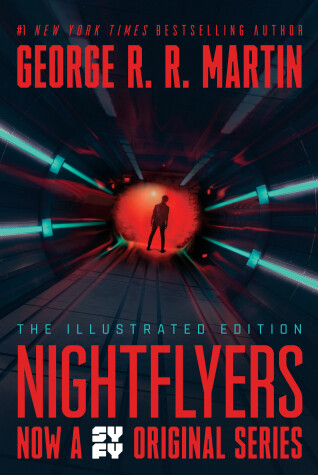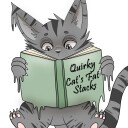
pamela
Written on May 1, 2019
Nightflyers was only recently released on Netflix where I am, and it looked really promising. Well acted, with gorgeous sets, and high production values made me confident that I would see a solid entry into the Sci-Fi genre. What I saw, instead, was a hot mess of plot holes, and a nonsensical plot. It was lovely to look at and created a pleasant viewing experience, but the story was weak. But this is normal for adaptations, and given that the source material was considered worthy of adaptation, surely meant that it would be of far higher quality than the show?
In some sense, George R. R. Martin’s Nightflyers was vastly superior to the television adaptation. It was tighter, less convoluted, and a lot more enigmatic. That is where my praise for Nightflyers ends, however. Despite being far more streamlined than the television show, for such a short work of fiction, it still split its focus between three main elements, rather than focusing on developing one. The result was that it introduced too much, and didn’t develop any of them to any satisfying level of engagement. The mystery of Royd, the mystery of the Nightflyer herself, and the mystery of the volcryn all felt underdeveloped – the volcryn were arguably the most interesting part of the novella and had the least amount of prose dedicated to them.
I accept what I am, but I did not choose it. I experience human life in the only way I can, vicariously.Martin’s writing is certainly not bad, but he made some stylistic choices that made Nightflyers a bit of a slog to read. I didn’t find myself truly engaged in the story because there was a lot of repetition. A lot of the information was given to the reader in long conversations for the sake of exposition, and the dialogue itself felt robotic and clinical. Characters were constantly given their full names when being described or spoken about, and a lot of their descriptors were repeated. The phrases “improved model” and “three steps ahead” were continuously repeated, and I found myself getting frustrated with each new repetition. It made it very difficult for me to really get into the story.
The flat tone and lack of detailed world-building meant that when I got to the real meat of the novella – full of as much gore and terror as you’d expect from the sci-fi horror genre – I didn’t really care enough to have any kind of reaction. Martin describes in visceral detail the deaths of some of his characters, and honestly, some of those descriptions were oddly quite beautiful. The problem was that those descriptions were still stuck in a web of flat narrative and emotionless characters, so I simply couldn’t have a reaction.
Nightflyers reads like a list of things you learn in a creative writing class, all put into a sci-fi setting. It felt like writing-by-numbers, rather than an organic story that developed with its own sense of flow. Background, dialogue, climax, etc., were all inserted where a writing textbook would tell you they should go.
My copy of Nightflyers was illustrated, however, and David Palumbo did a stellar job. His art was dark and emotive, and perfectly encapsulated the scenes I was reading. They were, without a doubt, the best thing about the novella, and did more to create a sense of fear, emotion, and dread than any of Martin’s prose.
As Nightflyers was written in the ’80s, there have been similar works of sci-fi horror released since that do a much better job. I’m glad I read it, but it’s not a book I would recommend for sci-fi fans to rush out and get their hands on.

